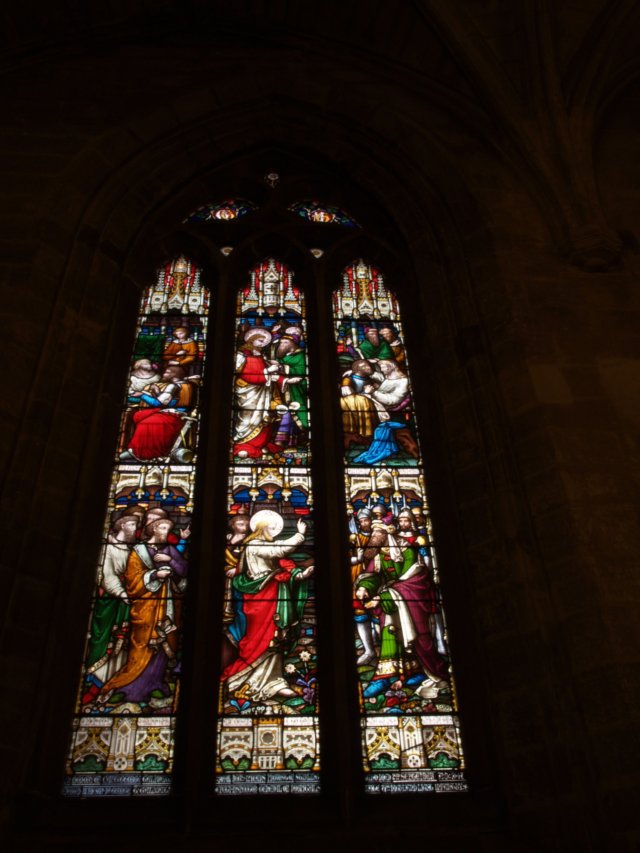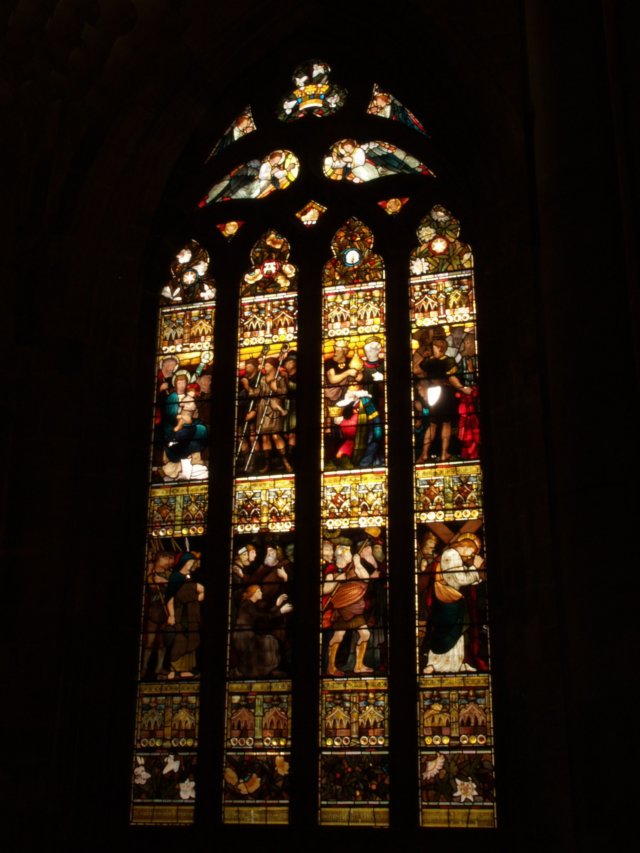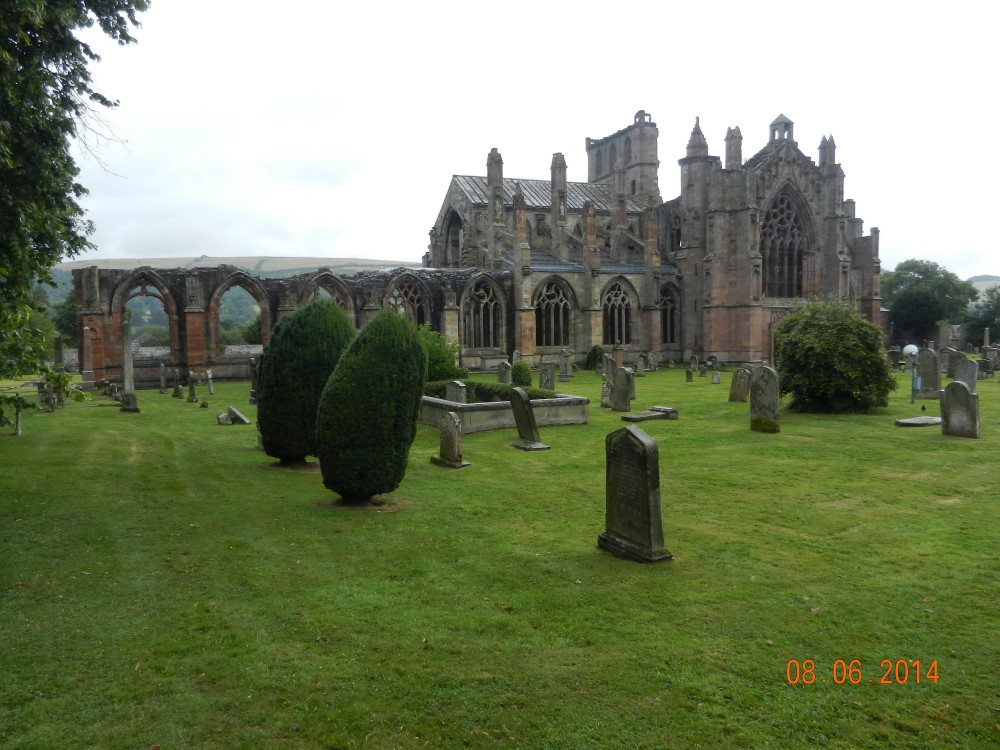Galbraith Travel
by Audrey Gilbreath
February 2022
Contents
Random Galbraith associated facts with places and people. Many people have asked
which sites to visit in Scotland and Ireland, and I thought I would share the
ones I know. There are too many to list in one issue of Red Tower, so I will keep
adding in subsequent issues.
This started from a trip with my nephew where I would try to convey a Galbraith
connection to most places we visited. Sometimes the association was a stretch,
and we called it “wait, wait, a Galbraith married their sister”. But it enriched
our travel to be able to know these connections.
I am not a historian, nor a writer. And I am too lazy to try and remember how to
write a proper article. But many people keep asking which sites to visit in Scotland
and Ireland when they go. I thought I would share what I know as a mini cheat sheet.
Perhaps someday someone in our group will write in-depth stories of each as they deserve.
I have asked Joan Wilson to create a space in the Clan Library so that we can
add photos, and other supporting documents too large for the Red Tower and we will
keep adding sites.
My references for Galbraith associated castles is mainly from the book
“Castles of the Clans The Strongholds and Seats of 750 Scottish Families and Clans”
Each of the of the thirteen castles mentioned deserves a separate in-depth write up.
Hopefully someday, we will have a detailed history. I will cover one castle ruin
in this issue.
Wikipedia.
Per a past clan president “Our earliest known castle was Inchgalbraith
on what is possibly a crannog in Loch Lomond”
“Crannogs are very small artificial islands built in rivers, lakes and streams in
Scotland, Wales and Ireland. Most are no bigger than 10 to 30 meters in diameter.
Researchers believe they were used as dwellings of some sort, likely accessible
by footbridges. No one knows their purpose, though theories abound. Some of the
crannogs have even been restored to what is believed to be their original
architecture, with thatched roof coverings. Until recently, researchers believed
that most, if not all of the Scottish crannogs were built during the Iron Age,
though there had been little study of their origin. In this new effort, the
researchers report finding evidence that suggests that at least some of the
crannogs in Scotland are much older than has been thought—thousands of years older.”
Article “New evidence suggests Scottish crannogs thousands of years older than thought
by Bob Yirka , Phys.org”
Inchgalbraith, is a small island with a small ruin in the middle of Loch Lomond.
From various articles, it looks like you can charter a small boat to reach the
island. There is little left but ruins and is said to be very tangled with roots
and trees. Depending on the water level you may or may not find a place to gain
access the island.
Many old stories of the Galbraith that lived there are quite fascinating. One
poem reference that he stole the sheep from Camstradden, and stole food from
the spit from Rossdhu.
Book “Lochlomond Side and Other Poems by John Young 1872”
“Tradition says that a sort of wild man, called Galbraith, domiciled in the old castle;
and being a most expert swimmer, as he had much need to be, used to strikeout for
Rossdhu House, take the roast off the spit, tie it round his body with a string, and
return in triumph to his island”
Book “The Moor and the Loch - Containing Minute Instructions in All Highland Sports
by John Colquhoun 1878”
“the stronghold of Galbraith, a noted freebooter, on Inchgalbraith:”
Note the definition of a freebooter is a pirate or lawless adventurer.
Book “Proceedings of the Society of Antiquaries of Scotland Volume 1 By
Society of Antiquaries of Scotland · 1852
“This is a tiny island lying to the south-west of Inchmoan – the “Peat Island.” It is
called Inch Galbraith, and was the residence of a family of that name. The last of
the race was a freebooter, who for many years in his island stronghold enjoyed immunity
from capture. He could swim to and from the shore like an otter. This was certainly a
necessary accomplishment in a castle round which one could not walk without falling into
the water, but it proved his ruin. His pursuers set a net of water, and he got
entangled in it. They dragged him like a salmon to the shore and gaffed him with their
dirks. There are nets still at the spot where this tragedy took place, but they are for
the pike that infest this part of the loch.”
Newspaper clipping “Kirkintilloch Herald 14 September 1898”
Legend states that the Isle of Gigha was occupied by two main parties.
The Galbraiths, living at Leim Farm, who were famous poet harpers, and whose
women were guardians of a holy well that could control the weather. And
the other half of the island were populated by giants.
Book “The Way It Was - A History of Gigha” by Catherine Czerkawska
“The Hill of Thumbs. - On the island of Gigha there once lived only these two
clans - the Clan Fhamhair, or Sons of the Giant, and Clan Bhreatan, or Galbraiths.
These two clans continued in perpetual enmity with each other; but one of the
Galbraiths took to wife of one of the Clan Fhamhair, and they lived together
quite comfortably for some time. Galbraith strove to reconcile the two clans,
but in vain, his wife’s friends having a deadly hatred to the Galbraiths. At
length her father took ill and was dying. His son-in-law wished to see him, to
pay his respects to him before he died; and the dying man was told that his
son-in-law was coming to him. The old man sought his sword and concealed it,
in order to give his son-in-law the death-blow. Galbraith perceived his purpose,
and, not liking to touch the dying man, said that he would have another day of it.
After the old man was dead, the two clans met on a little hill and fought with
great valour. The Galbraith gained the victory, and cut off the thumbs of the
other clan, and drove them out of the island. The hill whereon the battle was
fought retains to this day the name Croian-nan-ordaig, “The Hill of Thumbs”.
For a long time the Clan Bhreatan were the only inhabitants of the island.”
Book "Notes and Queries: A Medium of Inter-Communication for Literary Men,
Artists, Antiquaries, Genealogists, Etc. 1871"
In our own Clan Galbraith Wiki pages.
“A branch of the Galbraiths held Culcreuch in Strathendrick in 1320, and
before the end of that century had inherited the leadership of the clan.
In 1425 the ninth chief, James Galbraith of Culcreuch, joined the rebellion
of James Mor Stewart against King James I of Scotland, in support of the
overthrown regent Murdoch Stewart, Duke of Albany. As many as 600 members
of the clan were forced to flee after the failure of the revolt, exiled to
Kintyre and the Isle of Gigha, where they adopted the new name of
MacBhreatneaich of M'Vretny ("son of the Briton").”
Robert Galbraith/Caubraith
Scotland: St Giles church, And Greyfriars's Kirkyard, Edinburgh, Scotland
Scotland: College of Justice, Edinburgh Scotland
Scotland: Chapel Royal, Stirling Castle, Scotland
Paris: College of Conqueret, in the University of Paris
Robert Galbraith/Caubraith, (c. 1483-1544) legalist and philosopher. He was a
professor of Roman law at the college of Conqueret, in the University of Paris.
While at the University he was within the circle that contained prominent Scottish and
Spanish thinkers. Robert Galbraith published the book, Quadrupertium, in four parts.
It is considered one of the great logic works of the last-scholastic period. He also
wrote the book, the Liber Cubraith, but no copies have survived.
He was also a poet, as his name appeared in the list of poets in “Testaments of the Papyngo”
by David Lindsay.
He was later senator at the College of Justice in Edinburgh. A Lord of Session and later
an advocate to Margaret Tudor in 1528. Rector of Spott (which was a Chapel Royal Prebend)
and treasurer of the Chapel Royal (in Stirling) 1528-1532.
Galbraith was murdered on 27 Jan 1544 in
Greyfriar's kirkyard in Edinburgh.
“The murderer, John Carkettill, was ordered to pay 2,000 merks in compensation, and
the sum of 500 merks to be laid aside for the foundation of a chaplain to pray for
the soul of Galbraith at the altar to St Thomas in the Collegiate Church of St Giles
in Edinburgh.”
Most facts gathered from these books:
- “History of Scottish Philosophy” by Alexander Broadie
- “The Renaissance in Scotland, Studies in Literature, Religion, History and Culture
Offered to John Durkan“
Replacing an earlier structure and largely built in the 15th and 16th centuries
when Stirling was the capital of the Kingdom of Scotland, the Church of the Holy Rude
stands at the top of the ancient Royal Burgh. Scotland's finest medieval parish
church, still incomplete, connects the Kingdom of Scotland to the Kingdom of God.
This church contains two Galbraith Stained Glass windows:
- Window #15: Erected by Dr George Galbraith to the memory of his father,
Captain George Galbraith, Royal Engineers, 12 years Provost of Stirling,
who died 25th September 1847. The upper portion shows Christ healing the
Centurion's servant. The lower portion shows Tribute Money:
Render unto Caesar the things that are Caesar's, etc.
http://holyrude.org/TheChurchoftheHolyRudeStirlingScotland/galbraithwindow.html
- Window #7: The upper design of this window represents the adoration of the
shepherds to the infant Jesus in the stable at Bethlehem.
The lower design shows the closing scene of Christ's life. The window was gifted
by the children of William Galbraith, Town Clerk of Stirling and Cristian Littlejohn,
his wife, in affectionate memory of their parents. The window is dated 1880
and is by Adam Small,
Glasgow Nativity and Via Dolorosa window (holyrude.org)
This location falls under what I refer to as “wait, wait, didn’t a Galbraith marry their sister”.
At Melrose Abbey, Scotland, there is a grave marker for Robert the Bruce’s heart.
A Galbraith was married to the sister of the man (Sir James Douglas) that led the
Scottish knights carrying the heart to the Holy Land.
“The unveiling of the simple sandstone marker in what would have been the Chapter House
of the ruined Abbey marked the end of another chapter in the romantic story of
Robert the Bruce.
He had a great affection for Melrose and instructed that his heart be buried there, while
the rest of his body was destined for Dunfermline Abbey, the traditional last resting
place of Scottish kings. On his deathbed, Bruce asked his knights to go on a crusade and
take his heart with them. It was carried by Sir James Douglas, who was killed in battle
with the Moors in Spain. The casket was brought back to Scotland and buried at Melrose
- an event recorded in John Barbour's epic 14th-century poem "The Bruce".”
Newspaper article, Independent, 1998
From our Clan Wiki page.
“The fourth chief, Sir William Galbraith of Buthernock, married a sister of "Black Comyn"
who was head of the most powerful family in Scotland at the time. Sir William, however,
sided against the Comyns when he had a part in the rescue of the boy king Alexander III
from Comyn's control.[3] Ultimately Sir William rose in power to become one of the
co-Regents of Scotland in 1255. Sir William's son, the fifth chief of the clan, Sir Arthur,
supported Robert the Bruce, and also married a sister of Sir James Douglas.
'Good Sir James Douglas' is famous for perishing in Spain against the Saracens, while
leading a small band of Scottish knights carrying Bruce's heart to the Holy Land.”






